I’m Amelia. I have been working with hair care product shampoo and conditioner for 6 long years. This website is...Read more
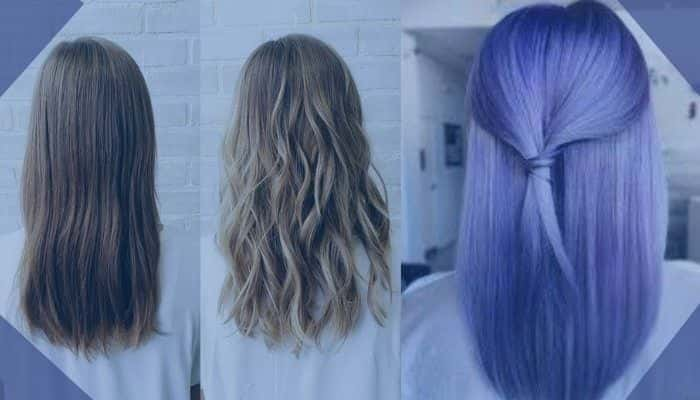
For adding color to our hair, colorless shampoo can be used as a pre-treatment for chemically-treated hair. We can use shampoo for cleansing the hair before going in for the full treatment. In this case, the most popular type of colorless shampoo is clarifying shampoos.
Colorless shampoo removes dirt and product buildup from the scalp and treatments that repair damaged or over-processed locks. Some may use purple shampoo. Can I mix 20 volume developer with purple shampoo? Before mixing, obviously we should understand their ingredients and how they work. So let’s know the details.
Table of Contents
What is a developer and how does it work?
Hair color developer is the name given to a chemical treatment that changes hair color. To achieve perfect white or blonde hair, it is often necessary to use a powder developed with ammonia in it. The oxidation process begins with compound molecules bonding. It can heat up when we mixing purple shampoo with developer together. As a result, molecules break apart and create new compounds. It oxidizes like hydrogen peroxide molecules convert oxygen into water.
To use a developer, we should begin by mixing it with peroxide. After that, brush this shampoo mixture on our tresses and wait for the recommended time. Once the allotted time is up, apply shampoo to remove as much of the color developer as possible. Complete the treatment by using a hair repair mask and styling products. The best way is to let our hair air dry before using any styling products. If we want to achieve a more natural look, use a lightening hair color developer.
Hair color developers are an effective method for changing the color of our hair. It will change our natural hair color without compromising its natural health. There are always risks associated with this type of treatment. For example, if I apply too much hair dye, it can cause damage to my hair cuticle. Damaging cuticles can make me strands appear dull and lifeless. So, If we feel like using a developer is too risky for our hair type, we can choose another undyed hair.
What is 20 volume developer and purple shampoo?
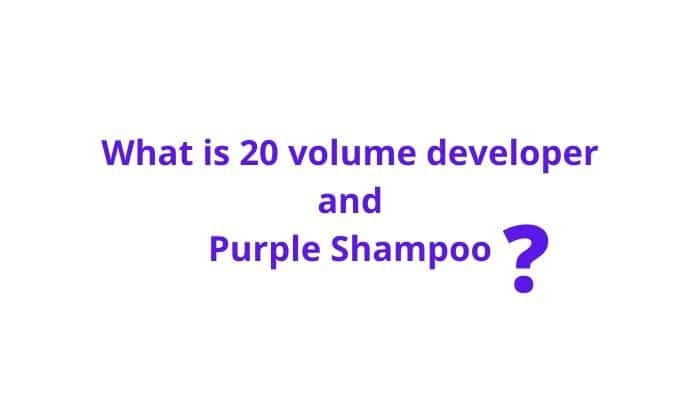
If we dye our hair, we’ll know that choosing the right hair product is an essential part of the process. If we want to keeps our look for a long time without having to redo it too often. In my point of view, it’s best to invest in products that are powerful and long-lasting. One of those products is 20 volume developer and Purple Shampoo.
20 Volume developer
A 20 volume developer is a light-sensitive liquid that can be used in film development. The term “volume” refers to the amount of water mixed with the developer before use. For example, a 20 volume developer would be mixed in one liter of water. It could develop up to twenty rolls of film at once. In comparison, a 3 or 4 volume developer would need three or four liters respectively before use, and so on.
20 volume developer is a crucial part of most chemical processes for dyeing hair. Because it stronger than 10 or 30 vol. One volume is the concentration of hydrogen peroxide in a product. The higher the volume, the more concentrated it is so 20 vol. It is double the intensity of 10 vol, which means it’ll work much better on darker hair and make our hair color last longer.
For the liquid to work properly, it must contain its own oxidizers, such as hydrogen peroxide or potassium bromide, which are also found in hair bleach. The type of oxidizer used affects the developer’s properties. For example, hair bleach contains hydrogen peroxide and a higher volume than normal liquid developers.
In addition, hair bleach also needs to contain fixer agents to stop the negatives from turning yellow hair. These agents make the developer more alkaline. It can make the developer unsuitable for certain film types, such as black-and-white or infrared films.
This higher amount of chemical in 20 vol. It also allows us to use less dye than a lower volume. Our hair will come out a lot brighter or bolder than if we use a lower developer. If we’re not careful, it can also end up too bright and unnatural looking. The lighter hair colors require us to be very cautious with how many chemical processes per month.
Purple Shampoo
Purple shampoo is a color-safe hair product used to combat the yellow tinge accompanying blonde or gray hair.
The purple shampoo contains ingredients that will dye our hair but not our scalp. It means purple shampoo lighten hair as it washes out. This process can be repeated over and over for a more intense hue.
Purple shampoo works by two principal mechanisms. It contains a gentle oxidizing agent. It allows us to slightly lift the cuticle layer off the hair shaft. It can slightly lift hair without stripping natural oils from our hair. Or it will help fragile, damaged strands of hair.
Some purple shampoos also contain silicone derivatives or dimethicone to give a smooth feel and a lubricating quality. One study shows that the ingredients can cause less damage and breakage of our hair fibers after bleaching. We can compare it to using no silicone products.
The second working mechanism of the purple shampoo is through an oxidant. What is an oxidant? An oxidant accelerates color development by combining with other molecules of oxygen. The “polyphenols” in purple shampoo are called oxidants. Because they combine with oxygen and form a compound known as hydroperoxide.
Hydroperoxide by itself is very unstable. It will break down into many compounds such as peroxy acids and peroxides, that can damage our hair. However, the polyphenols in purple shampoo are stable. So, they become hydroperoxides and contribute to coloring the hair while not causing harm to our hair or scalp.
What is the benefits of using Purple Shampoo?
The key benefits of using purple shampoo are easy application, easy washing clothes afterward, and preserving our natural light blonde hair color. We can get purple hair anytime.
The specific ingredients in purple shampoo may vary from brand to brand, which means we should take note of the labels to find the one most suitable for our hair. Here I have given some examples of what to look for in a purple shampoo:
Jojoba oil
- Promotes healthy hair and scalp.
- Maybe colorless or have a small amount of violet/purple dye, depending on the manufacturer.
- Absorbs into the scalp easily, without leaving residue behind.
- Recommended for all hair types.
Honey
- Natural humectants that can help reduce breakage, improve elasticity, and reduce frizz/static effects.
- It may contain some dye, depending on the manufacturer.
- Recommended for all hair types.
Peppermint Oil
- A mild, natural stimulant.
- Aids in scalp health and growth.
- It may contain some dye, depending on the manufacturer.
Tea Tree Oil
- An effective antibacterial agent for healthier scalp and fewer dandruff problems.
- Some tea tree oil shampoos may contain a hint of dye; check the labels carefully.
Panthenol (Provitamin B5)
- A hydrating ingredient that is gentle enough to use on damaged or dry hair. It can also help to give our tresses a more healthy appearance.
- It may contain some dye, depending on the manufacturer.
- Recommended for all hair types, especially I suggest damaged or dry hair.
Sodium Benzoate
- A preservative that has been known to keep the shampoo from spoiling.
- Some shampoos may contain a small yellow dye; check the labels carefully.
L-Ascorbic Acid
- A natural form of Vitamin C, this antioxidant has been known to reduce redness and dryness and help with hair growth.
- It may contain some purple dye, depending on the manufacturer.
Lemon Juice
- A natural source of Vitamin C that smells good is cheap and has many other uses besides just hair care.
- It may contain some purple dye, depending on the manufacturer.
Beeswax
- Great for sealing in moisture and making the shampoo last longer than average. It can also help prevent microbial growth within the product (see the ingredients above for more details).
- Some shampoos may contain a small yellow color; check the labels carefully.
Purple shampoos are also known to have the ability to turn into 20 volume developers when they’re around each other for too long. Here, I think we can also try moisturizing shampoo to our hair evenly.
Can I mix 20 volume developers with purple shampoo?
I know, many people refrain from coloring their hair because of safety concerns. We should avoid some toxic ingredients for predisposed conditions like eczema or psoriasis and more when it comes to hair care. However, many shampoos and conditioners produced for people with these conditions contain potentially hazardous ingredients like dyes, silicone derivatives, and sulfates.
Now you can question to me, Can I mix 20 volume developers with purple shampoo? Not at all! Honestly, the idea of mixing 20 developer Volume with purple shampoo is not good. Because if we mix the purple shampoo with the developer, it will not help us to change our hair color. If we also have any sensitivity or allergy, mixing them could lead to a negative allergic reaction.
Does mixing developer and shampoo together work?
The developer breaks down oils in our hair follicle. It allows them to properly absorb the color. On top of that, it prevents damage caused by drying out our roots. It also locks moisture in them. Generally, shampoo does none of this. But nowadays we can have some good shampoo to look after our hair. Shampoo actually targets the scalp and its bacterial population. It removes oils and fatty deposits on hair follicles clogged with scalp bacteria.
Hair color is a mixture of water, ammonia, and peroxide. Over time, this excess peroxide coats the hair shaft causing discoloration. Our job as a coloring artist is to control this reaction with our client, so they can enjoy their beautiful new locks for longer.
When we mix purple shampoo with the developer, we’re lowering the amount of hydrogen peroxide in our formula. As far as I know, shampoo is a cleaning hair product. When we mix developer with shampoo, our developer will not work properly.
Why does mixing purple shampoo with a developer can’t change my hair color?
The color of our hair depends on the amount and type of pigment. The protein in our hair cells produces a pigment called melanin. It is responsible for the natural colors that come out of a tube. There’s no way to change it, but purple shampoo can temporarily alter our hair color.
Hair starts out as white when the person is born, but over time it changes colors due to exposure to sunlight or other chemicals. If we don’t want damaged or gray hairs, in this case, my advice is we absolutely want to stay away from them. The color changes can sometimes be temporary, but those changes are permanent at other times.
The developer is a chemical reaction that involves mixing together an oxidizer. The main ingredient in a lotion developed is hydrogen peroxide, which also happens to be an oxidizer. Thus, we have both the oxidizer and the reducing agent right there in one bottle!
If we mix these two ingredients together, we get one big explosion of gas when we open the bottle with our purple shampoo. That is why we want to make sure that the cap is on. But don’t squeeze the bottle or shake it too vigorously. If we do, chemical reactions might occur within the bottle and cause an explosion.
The gas explosion that would happen when mixing purple shampoo with a developer can’t change our hair color. Because hydrogen peroxide mixed with another oxidizer doesn’t produce any new pigment. Instead, it just bleached hair out colors so that lighter colors show through.
How can I mix purple shampoo properly?

Mixing purple shampoo with our colorless shampoo is a great way to add hair color without bleaching it. But there are a few tricks we need to know before we mix up a batch. Here’s everything we need to know!
- Purple shampoos typically come in two forms: liquid and powder. Both should be mixed with either warm or hot water. The powder should be dissolved in hot water and then cooled before using. The liquid form can just be mixed with hot water and then cooled.
- Wet hair the strands we want coloring, section them off, and apply the mixture from virgin roots down. This step is more important than we may think. It allows the color to be absorbed into the hair. It’s also best to apply a color-safe conditioner or treatment only when our purple shampoo has been mixed with hot water.
- Once the strands have been colored and rinsed, shampoo them like usual, and then rinse again with cool water. We’ll want to section our hair again before rinsing so as not to over-dilute the purple shampoo.
- Use a good shampoo afterward to remove any remaining violet residue from our hair.
- We may want to use a hairdryer on low heat to help set the color so that it doesn’t run.
We can try it on our own hair if it has virgin roots. Totally mix purple shampoo to get the purple pigment to our virgin hair.
How can I lighten my hair with a developer at home?
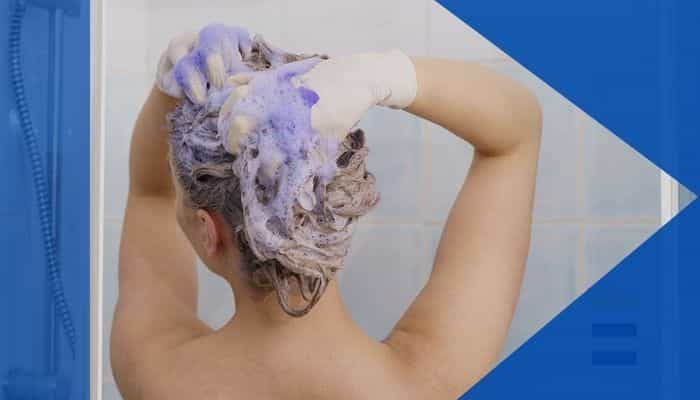
If we’re unhappy with our current hair color and want to lighten hair but don’t want to spend our hard-earned money at the salon, we can use bleach at home. If done right (with the right products).
Here are some steps to lighten hair with a developer:
- Cleanse with a clarifying shampoo. This will remove any residue from previous treatments and ensure no product is left on the hair that could react with the bleach. Apply conditioner after rinsing out shampoo.
- Prepare the 50 percent hydrogen peroxide mixture and 10 percent ammonia (yes, this sounds like an awful combination, but I promise it won’t hurt).
- Test the mixture on a small portion of our hair. If it’s clear and doesn’t turn yellow, leave it in for 20 minutes, then rinse thoroughly.
- Do it again with the full batch. We’ll probably only need to do this once if we have short hair. Longer hair will require three times with the stronger mix before knowing if our hair is truly light enough.
- Lather our hair in purple conditioner (this will save time later) and apply developer over the entire head. Leave it in for 20 minutes or as recommended by the manufacturer of the developer (I used Alva Chemical’s Professional Hair Bleach to Lighten hair).
- Rinse thoroughly. This will remove any harsh chemicals that could irritate or burn our scalp.
- Apply a purple conditioner to our hair and rinse it out twice, leaving the purple on for three minutes each time. These basic steps will ensure that all the developer is removed from our hair and that no product remains in the hair to react with bleach.
- Use purple shampoo on clean hair one time, then simply wash and blow dry as usual. Our hair will be soft and shiny just like before, with a slight yellow lightning color as well as some brassy hair tones of brassiness.
- Make an appointment with our stylist to have it professionally toned to remove brassiness and even out tone.
When using chemicals on our hair, we are always taking a risk. If we do not follow the manufacturer’s instructions, we may get a chemical burn or worse. Be sure we’ve researched the product and know what it can do before attempting this yourself.
We will also want to use rubber gloves and goggles when doing this procedure. As well as, try to wear an old shirt or cover up with an old towel that can be thrown away after the bleach has been applied. Even if we’re careful, there is still a slight possibility of burning our scalp. It can cause serious damage or even infection if not handled properly.
Can I use a developer-only to lighten my hair?
Before applying any product, we should test it on a small section of our head. We can do it just to see if it produces the desired results. Just developer can fully lighten hair. It can be less harmful to our hair to mix it with bleach. But using a developer alone cannot be more effective than using bleach.
If we want to dye dark hair or make a darker color, then use a yellow-toned product. This will help blend the colors better and create a more uniform look. If we apply the same color throughout our hair, it could give it that ugly one shade. Don’t be afraid to experiment with different colors!
Does mixing hair toner with low shampoo work?
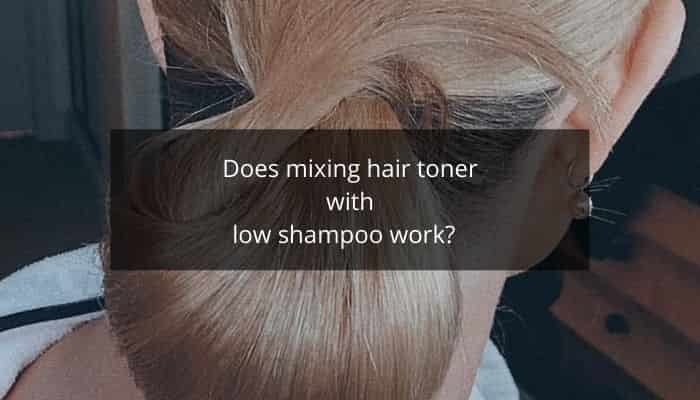
I have seen that some people claim that using colorless shampoo and toner together leads to better hair, while others are skeptical of the claims. What is more likely to be true: mixing these two products or only using one at a time? A toner can be used in your hair just after bleach. As well as, an expert says not to use shampoo or conditioner before bleach. After using toner,we can use purple shampoo.
I have found that both shampoo and toner have good and bad qualities which can be used in combination to improve hair health. However, this is not recommended by me who believe that only one of these products should be used at a time.
We can try a low-shampoo and toner together because we do not need to wash our hair as often if these two products are combined. They also claim that using a toner will make our hair cleaner, shinier, softer, and more manageable. As well as prevent breakage and split ends. Those who oppose this idea would say that the purpose of shampoo is to wash out any unwanted oils, dirt, or buildup in our hair. It can only be achieved if we use shampoo every time to wash our hair. Using toner alone is not enough to clean our hair and scalp.
Frequently Asked Questions
If we’ve been thinking about dyeing our hair just one shade of purple, it’s important to know which developer will produce our desired shade. But we need a 30 volume developer which contains 9% peroxide for our hair purple.
We can make light colored hair using only a developer. It is safer than using bleach. But, using only developers can’t hold the color for a long time.
Mixing hair bleach with purple shampoo is a bad idea. Because if we mix bleach with purple pigmentation, the peroxides can prevent minimum damage to the purple pigments. So the mix does not hold an effective solution for us.
Final Words
At last, I want say that before using any product on our hair, we should know the ins and outs of that product. Every product has its own merits and demerits. So before mixing any product, know about its ingredients. Hope we already have the answer to this question- Can I mix 20 volume developer with purple shampoo?

I’m Amelia. I have been working with hair care product shampoo and conditioner for 6 long years. This website is an outlet of my deep passion for hair, Shampoo and Conditioner. Basically, I'm here to guide you on shampoo and conditioner.
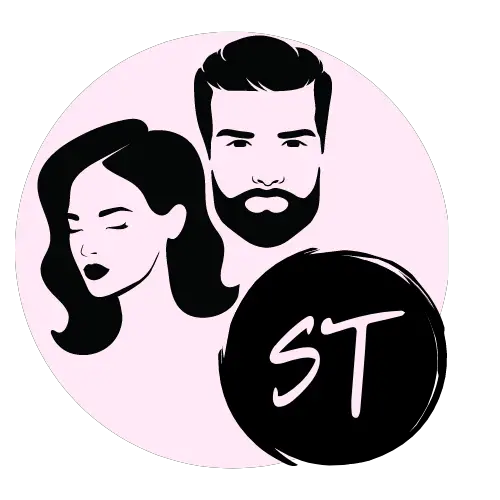
Can you please help me to remove dull dirty color look from gray hair? I wear a perm and I shampoo and blow dry and curl every two weeks
“Can you please help me to remove dull dirty color look from gray hair?” Of Course, why not buddy? I also want to help you. Very soon, I will publish a article in a details based on your problem. Just stay with me.
I have hard water how can I get the yellow brassy this out of my hair? I’ve been using the purple shampoo it’s gotten most of it but I want to put a platinum toner on my hair. Thank you.